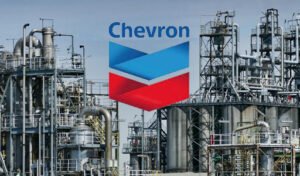$XOM $LNG $NG1
#ExxonMobil #LNG #EnergyMarket #NaturalGas #OilAndGas #EnergySupply #CommodityMarket #USExports #GlobalEnergy #EnergyTransition #FossilFuels #Bloomberg
The global energy market continues to face challenges in aligning energy supply with demand, particularly in the volatile liquefied natural gas (LNG) sector. Exxon Mobil Corp., one of the world’s leading energy giants, has cautioned investors and market participants that the expansion of LNG supply in the United States will not be a near-term reality. According to a senior company executive, while efforts to develop new LNG capacity are ongoing, the nature of these projects is long-term, often taking years to bring to fruition. Producers in the sector are grappling with extensive regulatory hurdles, the high upfront costs of infrastructure, and geopolitical headwinds. These delays underscore the ongoing global imbalance between energy demand and supply, which has economic implications for LNG-exporting nations like the U.S. and import-reliant regions such as Europe and Asia.
A significant driver of demand for LNG has been Europe, particularly in the aftermath of disruptions to traditional gas supply routes caused by the war in Ukraine. The urgency to diversify energy sources and bolster energy security has placed LNG at the forefront of market focus. However, this demand surge has also contributed to price volatility within the energy market, prompting concerns from both policymakers and consumers regarding affordability. Heritage contracts signed before prices escalated offer limited relief, while newly negotiated agreements reflect today’s elevated price levels. ExxonMobil’s guidance serves as a cautionary note for policymakers banking on U.S. shale gas output to bridge immediate supply gaps. Any delay in ramping up LNG exports could have far-reaching consequences as nations hedge their bets against an unpredictable energy future.
From a financial standpoint, the drawn-out timeline for new LNG projects could exert upward pressure on global natural gas prices in the medium term. With demand remaining robust, particularly in Asia and Europe, limited supply from the U.S. will likely exacerbate existing tightness in the market. This demand-supply imbalance could bolster the revenues of existing LNG exporters and operators, such as ExxonMobil, in the short run as they capitalize on elevated prices. However, it also places pressure on the sector to accelerate projects to avoid losing market share to emerging LNG producers such as Qatar and Australia, who are significantly expanding their gas export capacity. Exxon’s cautionary statement highlights a strategic narrative: the company appears to be managing expectations about the trajectory of its energy portfolio and ensuring transparency amid challenging market conditions.
Investors in the commodities sector, particularly those focused on LNG and natural gas, will need to watch these developments closely. Futures like $NG1 and stocks such as $XOM, which represent significant plays in energy, are likely to continue reflecting the tension between evolving supply capacity and global demand dynamics. Given the high barriers to entry in LNG, companies with established infrastructure and export channels are well poised to dominate the market in the intermediate term. However, stock performance may also be influenced by broader market factors, including interest rate changes, geopolitical events, and shifts in energy policy stemming from the global push toward decarbonization. The energy transition remains a critical undercurrent, and as LNG often serves as a “bridge fuel” in countries shifting away from coal, new U.S. projects will play a pivotal role in shaping how these transitions are balanced against economic constraints and infrastructure realities.











Comments are closed.